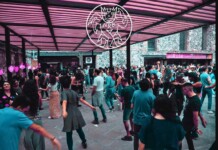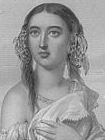49 years ago today, the April 5th Incident (known as the Tiananmen Square protest) helped pave the way for the end of Mao Zedong’s Cultural Revolution, and with it, Maoist communism in the country. Leaders at the time along with eyewitnesses believed there was nothing organized about the incident, and it was in fact a spontaneous coming together of all members and classes in society to mourn the passing of recently-deceased Premier Zhou Enlai, who was seen both as a national hero and victim of internal power struggles within the Chinese Communist Party’s Politburo. READ about this famous and singular protest… (1976)
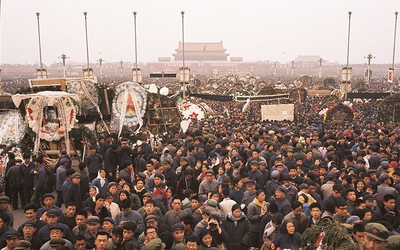
The Incident was a reaction against CCP limitations placed on the mourning period for Enlai. April 5th in China is the date of an ancient festival known as Qingming, or Tomb Sweeping Festival, and between April 4th and 5th, 2 million people visited Tiananmen Square in protest of the limitations by laying wreaths, flowers, candles, and poems at the base of the Monument to the People’s Heroes in Tiananmen Square in his honor.
Frustrations over the limited mourning period cracked the dam of the Chinese people’s patience. Written materials criticizing the mafia-like hold the Gang of Four had over the country expressed concern about the future of China, and even criticizing Mao and the Cultural Revolution itself, were distributed widely throughout the square that was cleared by the night of April 4th.
The next morning, people returned to find the Monument to the People’s Heroes had been completely removed, angering the crowd. Attempts to suppress the mourners led to a violent riot, in which police cars were set on fire and a crowd of over 100,000 people forced their way into several government buildings surrounding the square.
It’s difficult to judge exactly what impact the incident had in the unraveling of true socialism in the country, but the chief of security for Mao, Wang Dongxing, who performed the coup d’etat that removed the Gang of Four from power following Mao’s death later that year, subsequently expressed his opinion that the April 5th Incident was not a counter-revolutionary activity or even organized.
The political exile of the revolutionary Deng Xiaoping, enforced in the wake of the incident by Mao and the Gang, was eventually ended. Then, Deng outmaneuvered CCP elders, by transforming the nation into the rich and prosperous one we know today while serving as the leader of the People’s Republic of China from 1978 to 1989.
MORE Good News on this Day:
- Anne Sullivan finally was able to break through a wall of isolation and hostility in order to teach the word “water” to Helen Keller, who could not see, hear, or speak until this gifted teacher entered her life—a story immortalized on film in The Miracle Worker (1887)
- The song We Are the World was played simultaneously by an estimated 5,000 radio stations around the globe (1985)
- The trade union Solidarity was granted legal status in Poland (1989)
- Paul Newman wins a court victory over Julius Gold, to keep giving all profits from Newman Foods to charity (1990)
- 115 Chinese coal miners were freed as the world watched, culminating eight days of rescue efforts in a flooded mine, following an accident that had already killed 38 (2010)
On this day, 27 years ago, the Akashi-Kaikyo Bridge opened to traffic linking the City of Kobe on the main island of Honshu, to the offshore Awaji island. When it was finished, it boasted the longest central span of any suspension bridge in the world. Between the security of the first tower, the bridge proceeds another 1.2 miles across the turbulent Akashi Strait before reaching the second tower, a span which, if you read more, you will see is actually very long indeed.
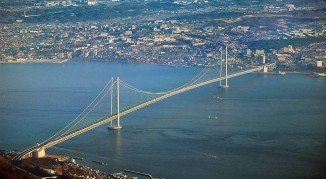
Back in 1959, the Japanese government was considering how best to span the squally Akashi Strait after a series of ferry disasters. A technical study found that any bridge would face “extremely severe design and construction conditions, which have no similar examples in the world’s long-span bridges”.
It took until 1970 for the planning commission to approve a bridge after extensive submarine study. Work didn’t begin until 1988, nearly 30 years after the idea of the bridge first arose. The bridge was designed with a dual-hinged stiffening girder system, allowing the structure to withstand winds of 286 kilometers per hour (178 mph), earthquakes measuring up to magnitude 8.5, and harsh sea currents.
The two piers (the bases for the towers) were built on long circular platforms using caisson methods, whereby a structure is lowered to the bottom of the strait and a pump removes all the water inside before concrete can then be laid.
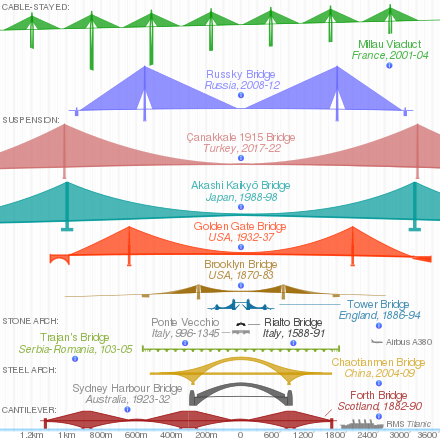
Inside the bridge are tuned mass dampers—strange, sculptured devices that, like a bell, are forged to vibrate at a certain frequency; namely the same frequency as the structure in which they are embedded. By absorbing resonant frequencies from shaking and earthquakes and converting them into one more compatible with the structure, they can deflect such events from bringing the structure down. Indeed the bridge has suffered little from several large earthquakes.
Until the Canakkale Bridge was finished in Turkey last year, the Akashi Bridge had the longest central span of any in the world. (1988)
303 years ago today, “Easter Island” was first discovered and recorded by a European visitor. The Dutch explorer Jacob Roggeveen named it so because he encountered it on Easter Sunday. Believed to be colonized by Polynesians around 1200 CE at the end of an enormous 400-year period of ocean-going expansion, the inhabitants over the first few generations completely deforested the island, isolating them from the greater Polynesian society.
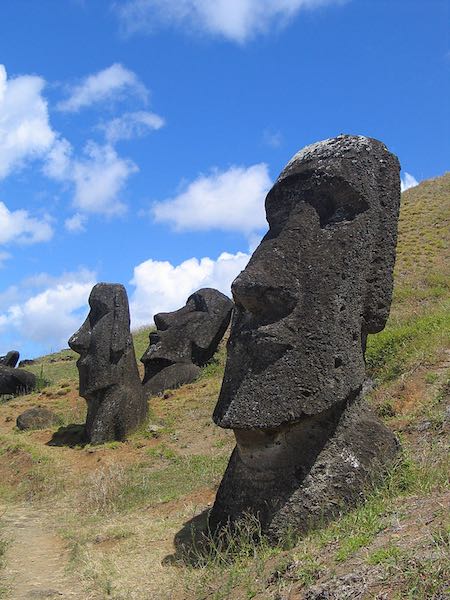
The large stone statues, or moai, for which Easter Island is famous (click to enlarge the photo), were carved by natives there, between 1100–1680, using solidified volcanic ash found near an extinct volcano. A total of 887 monolithic stone statues have been inventoried, with many having torsos ending at the top of the thighs, although a small number are complete figures that kneel on bent knees with their hands over their stomachs.
Each sculpture represented the deceased head of a lineage and required a couple hundred men to relocate it to other parts of the island. Some of the largest weighed 82 tons and were placed upright upon stone platforms facing the ocean. Some are buried up to the chin, with their skinny bodies remaining under the soil to prevent erosion. (1722)
169 years ago today, the distinguished educator, author, and advisor to presidents, Booker T. Washington, was born. Part of the final generation of black Americans born into slavery, he attended college in Virginia before being named head of the newly established black college, the Tuskegee Institute.
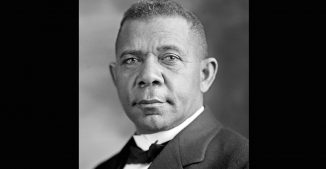 At age 39, when Southern lynchings reached a peak, Washington gave a speech, known as the “Atlanta compromise”, calling for black progress through education and entrepreneurship, rather than directly challenging Jim Crow segregation and disenfranchisement.
At age 39, when Southern lynchings reached a peak, Washington gave a speech, known as the “Atlanta compromise”, calling for black progress through education and entrepreneurship, rather than directly challenging Jim Crow segregation and disenfranchisement.
He mobilized a nationwide coalition of middle-class blacks, church leaders, and white philanthropists and politicians, with a long-term goal of building the community’s economic strength and pride by a focus on self-help and schooling, culminating in his 1901 autobiography Up From Slavery. READ his inspiring quotes… (1856)
– Success is to be measured not so much by the position that one has reached in life as by the obstacles which he has overcome.
– If you want to lift yourself up, lift up someone else.
– Excellence is to do a common thing in an uncommon way.
– No race can prosper till it learns that there is as much dignity in tilling a field as in writing a poem.
– I will permit no man to narrow and degrade my soul by making me hate him.
– You can’t hold a man down without staying down with him.
– Few things can help an individual more than to place responsibility on him, and to let him know that you trust him
Also, 411 years ago today, the first interracial marriage was recorded in North America. Pocahontas, the native American daughter of Chief Powhatan, married colonist John Rolfe from the English settlement of Jamestown. Pocahontas’s descendants, through their son Thomas, include members of the First Families of Virginia, First Ladies Edith Wilson and Nancy Reagan, and astronomer Percival Lowell. (1614)

Also, 76 years ago today, Fireside Theatre debuted, the first successful filmed series on American television. The anthology drama series that ran on NBC for nine years was low budget and sometimes written by freelance writers such as Rod Serling (who later created The Twilight Zone) and Ray Bradbury. The show was later named for one of the hosts, Jane Wyman, but it remained in the top ten most popular shows for most of its run—and predated the other major pioneer, I Love Lucy, by two years. (1949)
On this day 125 years ago, the Hollywood tour de force Spencer Tracy was born in Milwaukee.
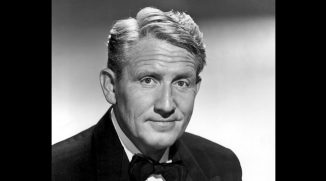
Only two leading men have been nominated for more Oscars than Tracy, who tied Paul Newman with nine award worthy performances (Jack Nicholson with 12 and Laurence Olivier with 10). In the 1930s, his career flourished, winning two consecutive Academy Awards for Best Leading Actor in 1937 for Captains Courageous, and in 1938 for Boys Town.
In 1942, he appeared with Katharine Hepburn in Woman of the Year, beginning a partnership (both on screen and in private) that lasted 25 years and led to nine incredible movies, including his last film—Guess Who’s Coming to Dinner—which was completed just 17 days before he died in 1967 of heart disease and diabetes. WATCH a 5-minute tribute by Turner Classic Movies… (1900–1967)
SHARE the Milestones, Memories, and Music…





